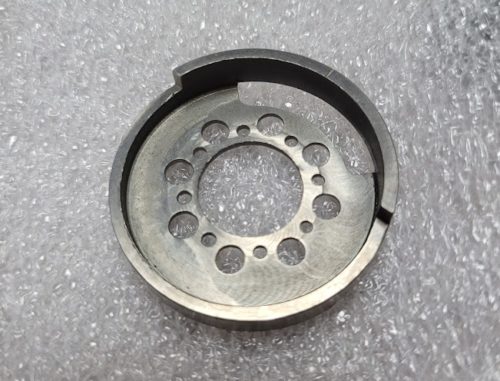Superior Tungsten Machining at Peerless Precision
Leave a CommentTungsten, one of the hardest elements in the world, is a reliable material for numerous manufacturing applications that encounter high-intensity environments.
Tungsten boasts the highest boiling point of all chemical elements, and with the second-highest melting point (after carbon), it’s capable of withstanding extreme temperatures up to 6,192 degrees Fahrenheit. It’s also naturally corrosion-resistant, repelling water and resisting most acids and bases.
In its purest form, tungsten is relatively malleable. But when combined with other elements, it becomes brittle and difficult to machine.
At Peerless Precision, we’ve worked hard to become tungsten experts and are excited to share some of our journey with you today. But first, we’ll break down everything you should know about tungsten machining.
Common Tungsten Applications
Over 100 years ago, William D. Coolidge first used tungsten filaments in incandescent light bulbs. Today, tungsten applications span a wide range of industries:
- Aerospace. Tungsten alloys composed of at least 85% tungsten offer impressive stabilization compared to other metals. Tungsten’s high attenuation properties lessen the physical impact of force, dampening vibration for aerospace machining applications like helicopter blades, aircraft ballast weights, and missile components.
- Electrical. Tungsten’s unrivaled heat-resistant properties make it an ideal choice for heating elements in electrical furnaces and other high-temperature applications. Tungsten also offers high electrical conductivity and can be used as a substrate in semiconductor rectifying devices.
- Medical. Due to its high density and attenuation properties, tungsten is an excellent material for medical machining applications like radiation shielding and diagnostic medicine applications like computed tomography, external beam radiotherapy, and x-ray imaging.
- Military and defense. Tungsten’s ultra-tough composition is well suited for projectile penetration applications like shrapnel heads and missiles used to breach armor. Tungsten alloy bullets are commonly used in large-caliber shelling, offering solid compression and deformation resistance.
Challenges of Machining Tungsten
Hard and brittle materials like tungsten are known for being difficult to cut. Tungsten machining can take years of trial and error to get right, requiring rigid fixturing and minimal spindle runout. Only the most skilled machinists have what it takes to machine it effectively.
Tungsten can be forged, drawn, extruded, or sintered, but no matter the manufacturing method, the tooling must be strong enough to withstand its incredible hardness. To minimize tool breakage and ensure a long tool life, we carefully research all tungsten alloys before machining so we know the optimal tooling to use. This process includes working closely with our tooling vendors and their representatives to identify the best tooling for the application and material we’re working on. Preserving the life of our tooling allows us to maintain reasonable costs and lead times for tungsten projects.
Careful adjustment of feeds and speeds is required during tungsten machining to balance tool health and machine time. If tungsten is machined too quickly, the tooling could break or damage the part. If it’s machined too slowly, the process is inefficient and costly. Experienced machinists can pinpoint the Goldilocks speed that’s just right.
Peerless Precision Journey to Becoming Tungsten Experts

At Peerless Precision, our dedicated research and development process and unwavering commitment to quality have helped establish us as tungsten machining experts.
In our early days of tungsten machining parts for a major customer, we discovered that the first of two CNC milling operations we had been performing went smoothly, but the second produced parts that cracked when flipped over. The parts continued to crack even more when we passed them through cylindrical grinding.
Determined to find a solution, we went back to the drawing board. We reviewed our programming and processes to figure out how to reduce cracking—but nothing seemed to work.
We decided it was time to evaluate the material itself and learned that using a purer and less brittle form of tungsten was the solution we had been looking for. This high-quality tungsten would maintain its hardness properties and be malleable enough to machine effectively.
Sourcing the perfect tungsten was no easy feat. We tried 5 different mills before finally finding the winner: Federal Carbide Company, a Pennsylvania mill that sources tungsten domestically. Cracking was less of an issue once we started using their tungsten, and our scrap rate dropped from 30% to 2%! We now source all of our tungsten from this trusted supplier—and our customers reap the benefits.
We’ll stop at nothing to get you the parts you need. If you’re looking for tungsten experts for your next project, look no further than Peerless Precision. Request a quote today!




